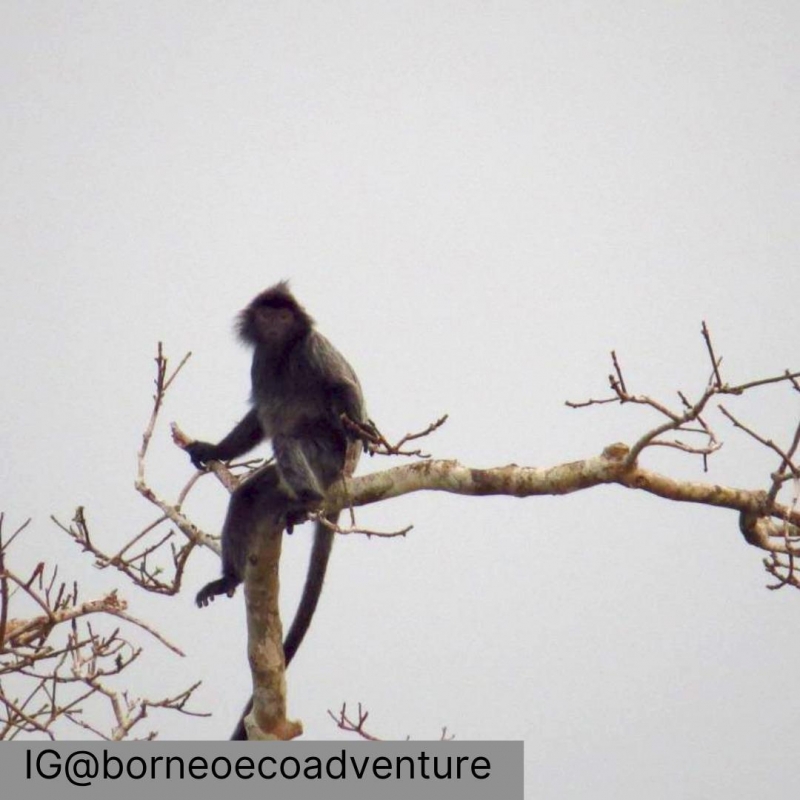Expedition to See Orangutan in Bukit Lawang + Exploring The Batak Land

Indonesia is a biodiversity hotspot, the country has many endemic species, and some are critically endangered. One of them is Orangutan. Orangutans are found exclusively in the islands of Borneo (Kalimantan) and Sumatra. The two species, the Bornean orangutan (Pongo pygmaeus) and the Sumatran orangutan (Pongo abelii) are iconic and unique to this region.
Since Orangutans are currently critically endangered due to habitat destruction caused by logging, agriculture, and human encroachment, Indonesia's government has been putting efforts to protect and conserve orangutans. It's not only essential for the species itself but also for the overall health of the ecosystems they inhabit and the well-being of local communities. One of the efforts is by building and running the Orangutan Rehabilitation Center in Bukit Lawang village, the Gunung Leuser National Park, North Sumatra, Indonesia.
Bukit Lawang is known for its lush green landscapes, dense forests, and the opportunity to observe orangutans in their natural habitat. When you join Orang Utan + Batak Country Tour, you'll get the chance to see and experience:
1. Orangutan Rehabilitation Center: One of the main attractions of Bukit Lawang is the Orangutan Rehabilitation Center. Established in the 1970s, this center was initially created to help rehabilitate captive orangutans and eventually reintroduce them into the wild. Visitors have the chance to participate in guided treks through the rainforest to observe these incredible creatures in their natural environment.
2. Jungle Trekking: Bukit Lawang is a popular destination for eco-tourism and adventure enthusiasts. The jungle trekking experience allows you to explore the rainforest, encounter various wildlife species, and witness the remarkable biodiversity of the area. In addition to orangutans, you might also spot other animals like gibbons, macaques, and various bird species.
3. River Tubing: The Bahorok River runs through Bukit Lawang, and river tubing is a popular activity here. Tourists can float down the river on inner tubes, enjoying the scenic views and the refreshing water. It's a fun and relaxing way to experience the natural beauty of the area.
4. Conservation Efforts: Bukit Lawang and Gunung Leuser National Park play a crucial role in the conservation of orangutans and their habitat. The region is part of the UNESCO World Heritage-listed Tropical Rainforest Heritage of Sumatra, which is dedicated to protecting the unique biodiversity of the rainforest.
5. Accommodation and Facilities: While Bukit Lawang is relatively small and remote, it offers a range of accommodations, from budget guesthouses to more upscale lodges. The village has basic facilities such as restaurants, shops, and tour operators that can help you organize jungle treks and other activities.
6. Local Culture: The local Batak culture and traditions add to the charm of Bukit Lawang. Visitors can interact with the friendly villagers and learn about their way of life.
Finished trekking in Bukit Lawang for 3 hours, we will head to Berastagi. Berastagi is a town located in the Karo Highlands of North Sumatra, Indonesia. It is situated at an elevation of around 1,300 meters (4,265 feet) above sea level, making it a popular hill resort destination known for its cool climate, picturesque landscapes, and proximity to several volcanoes.
Berastagi is surrounded by two active volcanoes, Mount Sinabung, and Mount Sibayak. These volcanoes offer opportunities for trekking and hiking. Mount Sibayak, in particular, is a popular hiking destination, and many visitors trek to its summit to witness panoramic views and experience the volcanic activity, such as hot springs and fumaroles. The town is also famous for its vibrant fruit and flower markets. You can explore the local produce, including a wide variety of tropical fruits, vegetables, flowers, and plants. The markets offer a glimpse into the region's agricultural activities.
The expedition to Batak Land is continued on the next day. By car, we will visit Dokan village to see the traditional houses of the Karo ethnic. The Karo Batak ethnic group is native to the Berastagi region. You will have the opportunity to learn about their culture, traditions, and unique architecture. Traditional Karo houses, known as "rumah adat," are characterized by their distinctive roof designs and intricate wood carvings. On the way to Samosir Island, we will stop at Sipiso-Piso waterfall. Located about 30 kilometers from Berastagi, Sipiso-piso is a stunning waterfall that plunges from a height of approximately 120 meters (394 feet) into a gorge. The viewing area offers spectacular vistas of the waterfall and the surrounding landscape.
The highlight of our Batak Country expedition is to visit Lake Toba, the largest lake in Indonesia and Southeast Asia. It is also one of the largest volcanic crater lakes in the world. Lake Toba is a popular tourist destination due to its stunning natural beauty, serene surroundings, and cultural significance. The lake was formed in the caldera of a supervolcano and is surrounded by picturesque landscapes, charming villages, and traditional Batak culture.
In the middle of the lake, there is a fascinating island we will visit by taking a ferry/ boat, Samosir Island. It is situated in the middle of Lake Toba and covers an area of approximately 630 square kilometers (243 square miles). It is roughly the size of Singapore and is the world's largest island within an island. The island is primarily inhabited by the Batak people. Visitors to Samosir Island have the opportunity to learn about Batak architecture, music, dance, and rituals. Traditional Batak houses, known as "rumah adat," can be found on the island, showcasing intricate carvings and unique designs.
You will get the chance to explore several Batak Toba traditional villages:
Tomok Village: This village is known for its ancient stone tombs of Batak kings and chiefs, including the ornate tomb of King Sidabutar.
Ambarita Village: Famous for its stone chairs and tables, which were once used for tribal meetings and rituals. You can also see the remains of ancient Batak houses and traditional architecture.
Simanindo Village: The village is known for its cultural significance, historical sites, and the presence of the Batak Museum, which provides insights into Batak traditions, customs, and way of life.
The Batak Museum in Simanindo showcases a collection of artifacts, traditional clothing, musical instruments, tools, and other items that provide a glimpse into the rich cultural heritage of the Batak people. The museum also hosts daily cultural performances, including traditional music and dance shows (Tor-Tor), allowing visitors to experience the vibrant Batak culture firsthand.
Dada Sabra S.
Log on http://theislandgirladventures.com for more interesting travelstories
Image by Borneo Eco Adventure
---------------------------------------------------------------------------------------------------------------------------------------------------
Intrested in visiting this amazing sight ? Check out what Perama Tour Have to offer !
